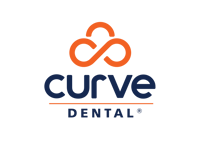7 Ways to Improve Your Dental Revenue Cycle Management Process

In a world where dental practices are as much about exceptional care as they are about efficient management, the financial health of a practice hinges on robust revenue cycle management (RCM) processes. Dental practices must navigate the intricate web of patient billing, insurance claims, and payment collections with precision and care. Ensuring these processes are optimized is crucial, not only for maintaining a stable cash flow but also for enhancing patient experiences and practice management.
As the landscape of dental administration evolves, adopting innovative solutions is key. From optimizing patient registration to leveraging advanced billing technologies, each aspect of the RCM process offers opportunities for improvement. Utilizing cloud-based solutions, like Curve Dental's® practice management software, can streamline operations and drive efficiency.
In this article, we will explore seven effective strategies to enhance your dental revenue cycle management. By focusing on areas like treatment plan crafting and accounts receivable strategies, these insights will help ensure that your practice is both financially thriving and poised to deliver outstanding care.
Optimizing Patient Registration and Insurance Verification
Optimizing patient registration and insurance verification is crucial for effective dental revenue cycle management. Accurate registration and verification processes lay the groundwork for smooth operations, minimizing claim denials and ensuring timely billing.
Embracing technology such as Artificial Intelligence (AI) and Natural Language Processing (NLP) can significantly reduce human errors. This adoption helps in accurate data entry and prevents the common pitfalls leading to claim denials. Digital tools streamline the collection and verification of insurance information, ensuring accurate billing and reducing potential delays in collections.
Front-desk staff plays a key role in this process. Regular training is vital for them to stay informed about changes in dental insurance policies. This knowledge helps in enhancing verification processes and contributes to financial stability.
Here’s a quick checklist for optimizing patient registration and insurance verification:
-
Employ AI and NLP for data accuracy
-
Verify insurance details upfront
-
Train staff regularly on policy changes
-
Use digital tools for data collection
By focusing on these areas, dental practices can set a solid foundation for efficient claims processing and patient billing. This approach not only eases administrative burdens but also ensures a steady cash flow, benefiting both the practice and patients.
Crafting Comprehensive Treatment Plans for Patient Approval
Crafting comprehensive treatment plans is essential to ensuring patient approval and satisfaction in dental practices. After examining the patient and verifying insurance, dentists create treatment plans that detail the expected costs and potential insurance reimbursements. These plans help patients understand the financial responsibility involved in their care.
Key Elements of a Treatment Plan:
-
Service Costs: Prices can vary based on location, service level, and dentist expertise.
-
Insurance Details: Potential reimbursement from insurance is clearly outlined.
-
Financial Implications: Patients can review the costs and benefits before proceeding.
| Treatment Plan Components | Description |
| Service Costs | Varies by location, service level, and expertise |
| Insurance Benefits | Potential reimbursement details |
| Patient Financial Responsibility | Clear outline of costs involved |
By presenting a detailed treatment plan, dental practices ensure transparency, facilitating patient approval. Patients gain a clear understanding of the proposed treatments and their financial implications, reducing surprises about costs.
This clarity in planning also aids in consistent cash flow and patient satisfaction, as informed decisions can be made with predictable financial outcomes. For more efficient practice management, consider solutions like Curve Dental to streamline the treatment planning process.
Streamlining Claim Submission for Faster Processing
Efficient claim submission is key to a thriving dental practice. Utilizing clearinghouse services is an effective strategy. These services allow you to submit claims in the required payer format. They also include claim scrubbing to detect errors before submission. This ensures claims are processed correctly and reimbursed promptly.
Accurate coding and complete documentation are crucial. They help in submitting clean claims. This leads to fewer delays in processing and helps maintain a steady cash flow.
Adopting electronic claim submission can prevent rejections. With daily transmission schedules, you improve the efficiency of the claims process. Real-time eligibility verification is another handy tool. It confirms a patient’s coverage and benefits instantly.
Here's a quick list:
-
Use Clearinghouse Services
-
Ensure Accurate Coding
-
Opt for Electronic Claim Submission
-
Implement Real-Time Eligibility Verification
Lastly, consider automated claims submission through software tools. This can enhance both the speed and accuracy of the processing cycle. For example, Curve offers cloud-based solutions that streamline these processes, ensuring your practice runs smoothly.
Enhancing Payment Posting to Improve Cash Flow
Enhancing payment posting is vital for improving the cash flow of dental practices. Accurate payment posting minimizes the risk of revenue loss due to errors in processing payments. It involves recording payments, making necessary adjustments, and applying them correctly. This ensures that financial records align with expected amounts, which is crucial for financial health.
Timely posting is critical for effective cash flow management. By reducing the number of accounts receivable days, practices can maintain a steady cash flow. It also deters embezzlement by revealing any discrepancies that require investigation by Revenue Cycle Management (RCM) experts.
To enhance this process, consider these key steps:
-
Accurate Recording: Ensure all received payments are posted immediately.
-
Regular Audits: Conduct routine checks to identify any irregularities.
-
Staff Training: Educate the billing team on best practices for precise payment posting.
An optimized process minimizes costly errors and boosts reimbursement rates. By investing in efficient payment posting, dental practices can protect revenue and achieve financial stability. For comprehensive practice management support, Curve Dental can offer solutions that streamline these processes, benefiting your overall cash flow strategy.
| Step | Action |
| Accurate Recording | Post payments promptly |
| Regular Audits | Identify irregularities |
| Staff Training | Ensure precision |
Implementing Effective Accounts Receivable and Collections Strategies
Managing accounts receivable (A/R) effectively is vital for maintaining a healthy dental revenue cycle. Quick payments, ideally within 10 days, ensure steady cash flow and financial stability. To achieve this, practices should promptly address outstanding balances and monitor payment trends.
Offering patients multiple payment options, including online portals, greatly facilitates collections. This not only makes it easier for patients to pay but also supports structured follow-ups for any outstanding balances.
Practices can benefit from regularly reviewing key performance indicators such as days in A/R and collection rates. This helps to identify any bottlenecks and implement necessary process improvements.
Here's a simple table summarizing effective A/R strategies:
| Strategy | Benefit |
| Quick Payment Turnaround | Ensures steady cash flow |
| Multiple Payment Options | Facilitates easier collections |
| Monitor Payment Trends | Preemptively address issues |
| Review Key Performance Indicators | Identify and fix process bottlenecks |
By focusing on these strategies, dental practices can enhance their financial health and minimize administrative burdens.
Leveraging Expert Support and RCM Outsourcing Services
Leveraging expert support and outsourcing for Dental Revenue Cycle Management (RCM) can streamline the financial health of dental practices. Outsourcing can boost efficiency by reducing errors in in-house billing processes. RCM experts play a crucial role in overturning insurance claim denials and securing faster payments, ensuring a steady cash flow.
Outsourcing services offer a myriad of benefits:
-
Efficiency: Expert support integrates practices smoothly into the financial flow.
-
Profitability: Increases through effective cash management.
-
Data Organization: Organizes practice data for insightful analysis.
A table illustrating the advantages of outsourcing RCM:
| Benefit | Impact on Practice |
| Fewer Errors | Reduced billing mistakes |
| Faster Payments | Quicker revenue inflow |
| Comprehensive Support | All-in-one hassle-free solutions |
RCM experts understand the significance of accurate code assignment and documentation in ensuring complete reimbursement. By handling these tasks, they relieve dental teams of the administrative burden, allowing them to focus more on patient care and satisfaction.
Adopting Advanced Billing and Payment Technologies
In today's dental practice, adopting advanced billing and payment technologies is crucial for maintaining financial health and improving patient satisfaction. Advanced practice management software, like Curve Dental, enhances the accuracy of patient information and streamlines billing processes. This efficiency reduces errors and accelerates the payment cycle, leading to a steady cash flow.
One effective strategy is automating billing processes. Automation minimizes errors and speeds up payment collections, resulting in consistent cash flow. Implementing electronic payment systems allows practices to receive payments faster, ensuring better revenue management.
Outsourcing billing tasks to specialized platforms can be a cost-effective solution. It improves billing accuracy and efficiency while minimizing administrative burdens. Furthermore, integrating technology for insurance verifications and claims processing significantly reduces the chances of human error. This integration boosts the overall revenue cycle management.
Conclusion: Improving Efficiency
-
Automate billing processes.
-
Use electronic payment systems.
-
Outsource to specialized billing platforms.
-
Integrate technology for insurance claims and verifications.
These steps not only ensure financial stability but also enhance the patient experience by reducing wait times and making payment processes more straightforward. For more insight into optimizing your practice’s revenue cycle, consider exploring Curve Dental's solutions.
Regular Monitoring of Key Performance Indicators (KPIs)
Monitoring Key Performance Indicators (KPIs) is essential for the financial health of dental practices. By regularly reviewing these metrics, practices can pinpoint bottlenecks and identify opportunities for improvement in their revenue cycles.
Key KPIs to Monitor:
-
Days in Accounts Receivable (AR): Ideally, this should be 10 days or less. Quick AR turnaround ensures a steady cash flow.
-
Collections Ratio: This is calculated as revenue divided by production. It's a reflection of financial efficiency and varies by insurance provider.
Regularly reviewing these KPIs not only helps manage financial stability but also sheds light on which insurance providers are most beneficial. This enables dental practices to make informed decisions that promote growth and elevate patient satisfaction.
Moreover, understanding trends in these KPIs is crucial. Being proactive in addressing emerging trends allows practices to take preemptive measures, ultimately enhancing growth and ensuring efficient patient care.
Providing Continuous Training for Staff to Stay Updated
Continuous training for dental staff on billing and coding is vital for efficient revenue cycle management. Proper training helps staff handle billing and insurance claims effectively, ensuring a steady cash flow and improving patient satisfaction. When staff remain competent, patients experience hassle-free billing, enhancing their overall experience.
Staying updated with the latest software tools helps maintain regulatory compliance and operational efficiency. This is crucial for minimizing errors, which can lead to claim denials and unpaid claims. Consistent training reduces these risks, thereby supporting the financial health of the practice.
Addressing training inadequacies optimizes cash flow and prevents financial disruptions. By investing in ongoing education, dental practice staff can master revenue cycle management, bolstering the practice's financial stability. This approach not only streamlines administrative processes but also lessens the administrative burden on the team.
Here are a few benefits of continuous staff training:
-
Enhanced handling of insurance claims
-
Reduced billing errors
-
Increased patient satisfaction
-
Improved financial sustainability
In summary, ongoing staff training is a cornerstone for effective revenue cycle management, fostering a well-functioning and financially sound dental practice.
*This content was partially generated by artificial intelligence. It may contain errors or inaccuracies, and should not be relied upon as a substitute for professional advice.

Curve Dental
Welcome to the official blog of Curve Dental. Serving up content about the team behind Curve Dental
